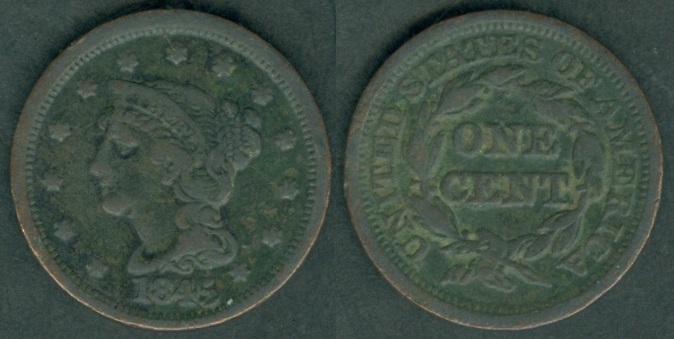 |
 |
| USA Coinage: 1845 - 1849 | ||
| under President: James Knox Polk | ||
| James Knox Polk (November 02, 1795 – June 15, 1849) was the 11th President of the United States (March 04, 1845 – March 04, 1849). He previously served as the 13th Speaker of the House of Representatives (December 07, 1835 – March 04, 1839) and as 9th Governor of Tennessee (October 14, 1839 – October 15, 1841). A protege of Andrew Jackson, Polk was a member of the Democratic Party and an adherent of Jacksonian democracy and Manifest Destiny. During his presidency, the United States expanded significantly with the annexation of Republic of Texas, the Oregon Treaty, and the conclusion of the Mexican-American War. | ||
| Polk instructed the Tennessee delegates to support his vice presidential nomination while remaining neutral on the presidency, thus opening up the possibility of a deal between Polk and Van Buren in which Van Buren would choose Polk as his running mate in exchange for the Tennessee delegation's votes for the 1844 Democratic National Convention. Polk's maneuvering was opposed at the national level by two powerful Senators, Thomas Hart Benton of Missouri and James Buchanan of Pennsylvania, both of whom sought a vice president of a lesser stature so as to clear the way for their own respective presidential candidacies in 1848. The potential annexation of the Republic of Texas by President John Tyler upended the presidential race; while Van Buren and the Whig frontrunner, Henry Clay, opposed the annexation and a potential war with Mexico over the disputed territory, Polk and Andrew Jackson strongly supported territorial acquisition. Disappointed by Van Buren's position, Jackson instead decided to support Polk as the party's presidential candidate in the 1844 election, though Polk was skeptical that he could win that nomination. | ||
| The United States presidential election of 1844 was the 15th quadrennial presidential election, held from Friday, November 1, to Wednesday, December 4, 1844. Democrat James K. Polk (49.5%) defeated Whig Henry Clay (48.1%) in a close contest that turned on the controversial issue of slavery expansion through the annexation of the Republic of Texas. James Gillespie Birney of Liberty party took 2.3% votes in the election. When he took office on March 4, 1845, Polk, at 49, became the youngest man at the time to assume the presidency. Polk's inauguration was the first inaugural ceremony to be reported by telegraph and to be shown in a newspaper illustration (in The Illustrated London News). | ||
| James K. Polk, having achieved all of his major objectives in one term and suffering from declining health, kept his promise not to seek re-election in 1848. States admitted to the Union during his term were Texas (December 29, 1845), Iowa (December 28, 1846) and Wisconsin (May 29, 1848). | ||
| Polk's time in the White House took its toll on his health. Full of enthusiasm and vigor when he entered office, Polk left on March 04, 1849, exhausted by his years of public service. He lost weight and had deep lines on his face and dark circles under his eyes. He is believed to have contracted cholera in New Orleans, Louisiana, on a goodwill tour of the South after leaving the White House. He died of cholera at his new home, Polk Place, in Nashville, Tennessee, at 3:15 pm on June 15, 1849, three months after leaving office. He had never joined any church, but received a deathbed Methodist baptism. | ||
| Currency: Dollar = 100 cents | ||
| Monetary System: Penny = Cent, Trime = 3 Cents, Nickel = 5 Cents, Dime = 10 Cents, Quarter = 25 Cents, Half Dollar = 50, Cents, Dollar = 100 Cents, Quarter Eagle = $2.50 Gold, Stella = $4.00 Gold, Half Eagle = $5.00 Gold, Eagle = $10.00 Gold and Double Eagle = $20.00 Gold. | ||
|
Mint Marks: C – Charlotte, N.C., 1838-1861. CC – Carson City, NV, 1870-1893. D – Dahlonega, GA, 1838-1861. D – Denver, CO, 1906-present. O – New Orleans, LA, 1838-1909. P – Philadelphia, PA, 1793-present (coins without mintmark also belongs to Philadelphia). S – San Francisco, CA, 1854-present. W – West Point, NY, 1984-present. |
||
|
|
||
| 1845 | ||
|
||
View below links on
coins issued during the Presidential rulers of United States:
|
||
| Countries / Territories | ||
| Chiefa Coins |
